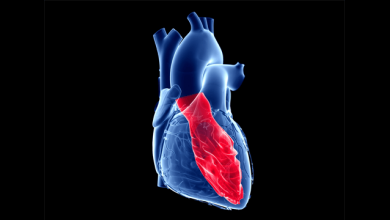Search results
Prognostic Value of Stress Myocardial Single-photon-emission Computed Tomography in the Elderly
Author(s):
Santo Dellegrottaglie
,
Pierluigi Costanzo
,
Stefania Paolillo
,
et al
Added:
3 years ago
Article
Author(s):
Jyrki T Kuikka
Added:
3 years ago
Myocardial perfusion imaging (MPI) using combined computed tomography (CT) and single-photon emission CT (SPECT) systems plays an important role in the management of patients with coronary artery disease (CAD).1–4 The method can be used to assess myocardial perfusion and left ventricular function simultaneously. It is an especially valuable tool for assessing short-term risk of CAD, thus…
View more
Pasquale Perrone-Filardi
Research Area(s) / Expertise:
Job title: Cardiologist
Author
Author(s):
Todd D Miller
,
J Wells Askew
Added:
3 years ago
Case Study
A 47-year-old male truck driver with no previous history of heart disease presents for his annual Department of Transportation physical. He has noticed mild dyspnoea when climbing stairs but not with other activities of daily living. He denies chest discomfort, palpitations, orthopnoea, paroxysmal nocturnal dyspnoea or ankle oedema. His risk factors for coronary artery disease (CAD)…
View more
Author(s):
Joanne D Schuijf
,
Jeroen J Bax
,
Ernst E van der Wall
Added:
3 years ago
Diabetes is an important risk factor for coronary artery disease (CAD) as reflected by the four-fold greater incidence of CAD in diabetic patients compared with the general population.1 Cardiovascular death is the most common cause of mortality in the type 2 diabetic population and, once diagnosed with CAD, patients with diabetes have a considerably poorer prognosis than their non-diabetic…
View more
Author(s):
Marianne Arnestad
,
Panithaya Chareonthaitawee
,
Beat Andreas Kaufmann
,
et al
Added:
3 years ago
Prevalence of Long-QT Syndrome Gene Variants in Sudden Infant Death Syndrome
Arnestad M, et al.
Circulation, 2007;115(3):361–7.
There are inadequate data regarding the true prevalence of mutations in arrhythmia-susceptibility genes among sudden infant death syndrome (SIDS) cases. Given the importance and potential implications of these observations, the authors performed a study to more…
View more
Author(s):
Michalis Kolentinis
,
Melanie Le
,
Eike Nagel
,
et al
Added:
3 years ago
Ischaemic heart disease (IHD) is the leading cause of morbidity and mortality worldwide. Two major pathways of disease development are acute coronary syndrome (ACS) and stable chronic angina.1,2 The success of prevention measures and early treatment pathways in ACS has helped to reduce the heart failure (HF) burden due to post-infarction remodelling and systolic dysfunction. However, accurately…
View more
Author(s):
Thomas A Foley
,
Sunil V Mankad
,
Nandan S Anavekar
,
et al
Added:
12 years ago
Left ventricular ejection fraction (LVEF) is one of the most commonly reported measures of left ventricular (LV) systolic function. It is the ratio of blood ejected during systole (stroke volume) to blood in the ventricle at the end of diastole (end-diastolic volume). If the LV end-diastolic volume (EDV) and end-systolic volume (ESV) are known, LVEF can be determined using the following equation:…
View more
Author(s):
W Kevin Tsai
,
Kathleen M Holohan
,
Kim Allan Williams
Added:
3 years ago
Coronary artery disease (CAD) represents a tremendous financial and health burden as the leading cause of death in the US.1 Acute coronary syndrome and its subsequent manifestations, including heart failure and need for cardiac transplantation, are associated with significant morbidity and mortality. Hypertension, dyslipidemia, tobacco abuse, diabetes, chronic kidney disease, and family history…
View more













